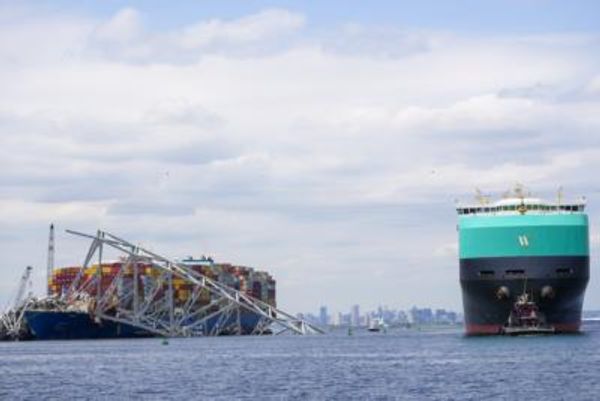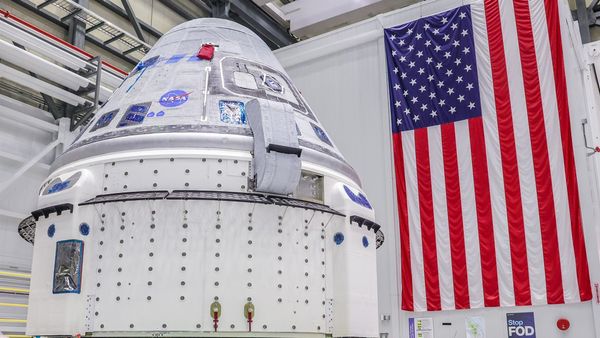If the U.S. economy closely resembled any object, it'd probably be a broken traffic light.
That's because the overall financial and economic system is flashing every color possible, from healthy green glows and yellow warning lights to heavy recession-red colors. With so many mixed signals, it isn't exactly easy to tell just how strong any underlying momentum may be.
"Right now, economic growth is decent, but once you dig below the surface, things look a little bit more fragile," says Scott Anderson, chief U.S. economist at San Francisco-based Bank of the West. "It's a bifurcated expansion. We're really looking at a tale of two different realities."
Here's what's happening in the U.S. economy right now based on five main tiers _ as well as what's making or breaking it.
1. U.S. hiring flashes mixed signals, but job market holding up
The job market has provided a comforting steadiness for those trying to spot check the health of the U.S. economy during such turbulent times. The unemployment rate is at 3.6 percent, near a 50-year low, while employers have added positions for a record 109-straight months.
It's been evident, however, that the pace of job creation is slowing. At this time last year, the U.S. economy had added nearly 2.26 million new positions. That total has fallen by 26% this year, with employers creating about 1.67 million positions. But with the U.S. expansion now in its eleventh calendar year _ the longest on record _ some slowing is to be expected.
But there's been some yellow caution tape to be concerned about. Employers in the U.S. added fewer jobs than economists expected, while private-sector hiring only expanded by 114,000. The main boost came from government hiring, including the hiring of 1,000 temporary workers for the 2020 Census.
The unemployment rate, however, fell to a fresh, 50-year low, leading many economists to wonder whether the economy is nearing full employment. But that's not exactly the case, says Brett Ryan, senior U.S. economist at Deutsche Bank. If the economy were at full employment, theory suggests that wages would rise at a more substantial pace as employers to try to attract workers. Wages in September, however, rose from 2.9% a year earlier, missing estimates. This snapped an almost year-long streak of pay gains that topped 3 percent. Total hours worked have also started to slow, while firms have cut back on capital expenditures, Ryan says.
"Is this slowdown that we're seeing in the labor market supply driven in the sense that there just aren't enough excess workers out there?" Ryan says. "Or is it demand driven, meaning firms are seeing a pullback in demand, and so therefore, they're going to pull back in hiring. We would argue that the slowdown in the labor market is more demand-driven."
But the job market isn't yet falling off a cliff. In October, employers blew past expectations, adding 128,000 new positions after an upwardly revised 180,000 in the prior month. That's even amid Census Bureau hiring and a General Motors strike that the Labor Department estimated would shave 41,600 positions from the U.S. economy.
Wage growth picked back up to 3 percent, while the unemployment rate edged up slightly to 3.6 percent. Now, hiring has averaged out to 176,000 over the past three months.
"It's a labor market that continues to defy expectations of softening," Anderson says.
2. Consumers continue to prop up the U.S. economy, but storm clouds could be coming
Broadly speaking, that's keeping the American consumer intact, an important component for the economy. Two-thirds of the U.S. economy is based off of consumer spending, so growth relies heavily on how willing consumers are to spend.
Case in point: The U.S. economy grew by 1.9% in the third quarter of 2019. Net exports and private, fixed investments and inventories weighed on growth, but the U.S. consumer kept it on solid footing. That's because consumption grew by 2.9 percent, contributing more to growth than any other category.
"The consumer has been a big part of this story," Anderson says. "They're definitely the bright spot still."
It's largely been the same story for U.S. retail sales, which jumped in July by the most in four months. After several months of volatility, retail sales grew for six straight months, offering economists a sigh of relief. But then in September, retail sales unexpectedly fell, making economists worry that the U.S. economy's bright spot may now be dimming.
3. Consumer confidence is showing signs of softening
That drop could have been foreshadowed in reports about U.S. consumers' sentiment, which have softened throughout the latter half of 2019.
After reaching a more than two-year low following the longest government shutdown in U.S. history, consumers' confidence rebounded, according to the University of Michigan's consumer sentiment index. In August, however, it plummeted even further than that January low, after fresh escalations to the U.S.-China trade war caused jitters.
President Donald Trump on Aug. 1 announced that he'd slap tariffs on an additional round of imports from China, fueling market volatility. In the preliminary reading of the report, consumers were also worried about the expansion's future after the Federal Reserve cut interest rates for the first time in more than a decade.
"Consumers strongly reacted to the proposed September increase in tariffs on Chinese imports," said Richard Curtin, who leads the survey, in a statement accompanying the preliminary reading, released Aug. 16, while "the main takeaway for consumers from the first cut in interest rates in a decade was to increase apprehensions about a possible recession."
That doesn't bode well for the future of consumer spending, Curtin said, with consumers concluding that they may "need to reduce spending in anticipation of a potential recession."
Sentiment in October edged up, rising to a three-month high. But Curtin in the release said that all eyes will be focused on the "potential threats to their prevailing optimism."
"Consumers really were a more optimistic bunch last year, and that carried over into this year as well," Anderson says. "But the consumer isn't immune to these confidence effects. We'll see that more as data comes in. As soon as you start to see the market volatility hitting people's 401(k) or see more visible layoffs and less hiring, consumers are going to have a rethink."
4. Trade wars are causing a slowdown in business investment, manufacturing
That's not the only aspect of the U.S. economy struggling to parse through trade disputes. Manufacturing activity is contracting, with the Institute for Supply Management's purchasing manager index registering below 50 for the third-straight month.
A Federal Reserve gauge of industrial production has also dropped off after peaking in Dec. 2018 at 110.6. Between then and Sept. 2019, the most recent reading, production has fallen for two straight months to 109.5.
With the current declines, it's safe to say we can call this a global manufacturing recession, says Joe Brusuelas, chief economist at RSM. That comes with implications for the broader U.S. economy.
"All the janitors, all the window washers, accountants _ you go through and think about what it takes to maintain a factory," Brusuelas says. "We're concerned that the manufacturing recession will spill over into the service sector area because of the unusually large contribution the manufacturing sector makes toward the establishment and support of service sector jobs."
Businesses are also holding back on making investments. During the third quarter of 2018, private, fixed investment contributed 2.27 percentage points to gross domestic product. It's since moderated, and shaved more than 1 percentage point off of growth in the second quarter of 2019. By the third quarter, however, it trimmed 0.2 percentage points.
Businesses and producers are set back by the ongoing trade war between the U.S. and China, as well as a slowdown in the broader global economy. Though much about trade policy is up in the air, minutes from the Fed's July 30-31 rate-setting meeting show that businesses throughout the country are operating under the assumption that these disputes won't get resolved.
"The causal linkage is that trade policy is imposing an uncertainty tax on the economy," Brusuelas says. "Firms are now exceptionally concerned about the direction of that policy. Therefore, they're pulling back on investments. If they don't make those investments, productivity slows, hiring slows, and compensation begins to fall back."
5. Financial conditions are improving after Fed comes to rescue
Most economists would say that the markets aren't the U.S. economy _ but right now, financial conditions are an important part of the narrative.
It's been a rocky year. The 10-year, 2-year Treasury yield curve inverted Aug. 14 for the first time since the financial crisis, a recession indicator that's widely watched by markets and economists. Markets took a beating Aug. 1 after fresh escalations in the U.S.-China trade dispute. They were also already down on July 31, after investors struggled to interpret Fed Chair Jerome Powell's comments about future Fed moves.
"Financial conditions are becoming much more important now," Brusuelas says. "Excluding housing and tech, financial conditions are negative. They're a drag on growth. When you get that sort of volatility in financial markets that we've seen caused by the trade wars and tariffs, upper and middle-income households are notoriously sensitive to swings in equity prices. It will tend to slow the pace of spending."
The picture might be getting better, at least as of late. The Fed on Oct. 30 cut rates for the third time this year and signaled that they thought rates were now in an "appropriate" place, meaning officials now prefer to wait-and-see before making any further moves. But when asked about the likelihood of the Fed getting back to hiking rates again, Powell indicated that there's a high bar.
"We would need to see a really significant move up in inflation that's persistent before we would consider raising rates to address inflation concerns," Powell said at the press conference.
That hasn't happened much throughout the current expansion, with inflation trailing the Fed's 2% target most of the time. As a result, markets believed that the Fed hiking rates was close to impossible.
At the same time, the U.S.-China trade war appears to be moderating, helping send the Dow, the S&P 500 and the Nasdaq Composite to their highest levels on record. Officials are nearing the early stages of a "Phase One" trade deal, and Beijing and Washington are considering rolling back tariffs to pave the way, according to The Wall Street Journal. That's helped the yield curve, with both spreads curves uninverting.
A TALE OF TWO ECONOMIES
It's a "tale of two economies right now," Brusuelas adds. "The American consumer is propping us up," but other aspects, such as investment and manufacturing, are weakening.
"What's driving things? It's obviously trade policy," Brusuelas says. "The best thing for the U.S. economy right now would be for President Trump to say that the trade balance has narrowed, declare victory and end the trade war."
Even though the majority of the slowdown so far is happening among manufacturers, it's still worth keeping an eye on, Anderson says.
"In economics, we track cyclical sectors _ or sectors that tend to go up and down with the business cycle. Some of the most sensitive to overall economic activity are manufacturing," Anderson says.
"Those sectors tend to move first in a downturn. The timing can vary; these things don't happen overnight, but I think the trends are in motion in that direction, as long as this uncertainty continues to escalate from the trade war."
Powell in his October press conference said risks to the outlook have "moved in a positive direction," later adding that change was mostly because of the trade war. But even though risks appear to have moderated, they're not yet fully resolved. If the trade war deepens, Powell has said before that he doesn't know how much monetary policy can aid the problem, according to a speech at a policy symposium in Wyoming.
There are "no recent precedents to guide any policy response to the current situation," Powell said. "Monetary policy is a powerful tool that works to support consumer spending, business investment and public confidence, it cannot provide a settled rulebook for international trade."
"They're not making a lot of promises that the Fed is going to be all that effective to offset the risks from the trade war," Anderson says. "What I worry (about) is, we don't have the right tools or enough tools in place, both in fiscal and monetary policy, to handle a sharp recession. The Fed can soften the impact, but whether they can stop this freight train is another story."
BOTTOM LINE
It's a good time to start preparing for the end of the business cycle, Brusuelas says. For consumers, that means paying down high-cost debt, boosting your emergency savings and identifying ways that you can cut back in the event of a sudden loss of income.
A recession, however, doesn't look like it's immediately around the corner, Anderson says. But a growth slowdown and market volatility is to be expected more than 10 years into the economic expansion as market participants navigate choppy waters from the trade war that can change any given day.
"We're in a fragile situation," Anderson says. "The consumer has a lot of momentum, and it would take several months for further weakening to get to the danger zone in terms of economic growth, but that doesn't mean we can't be there a year or a year-and-a-half down the road. It's getting harder and harder to point to what the good news is."







